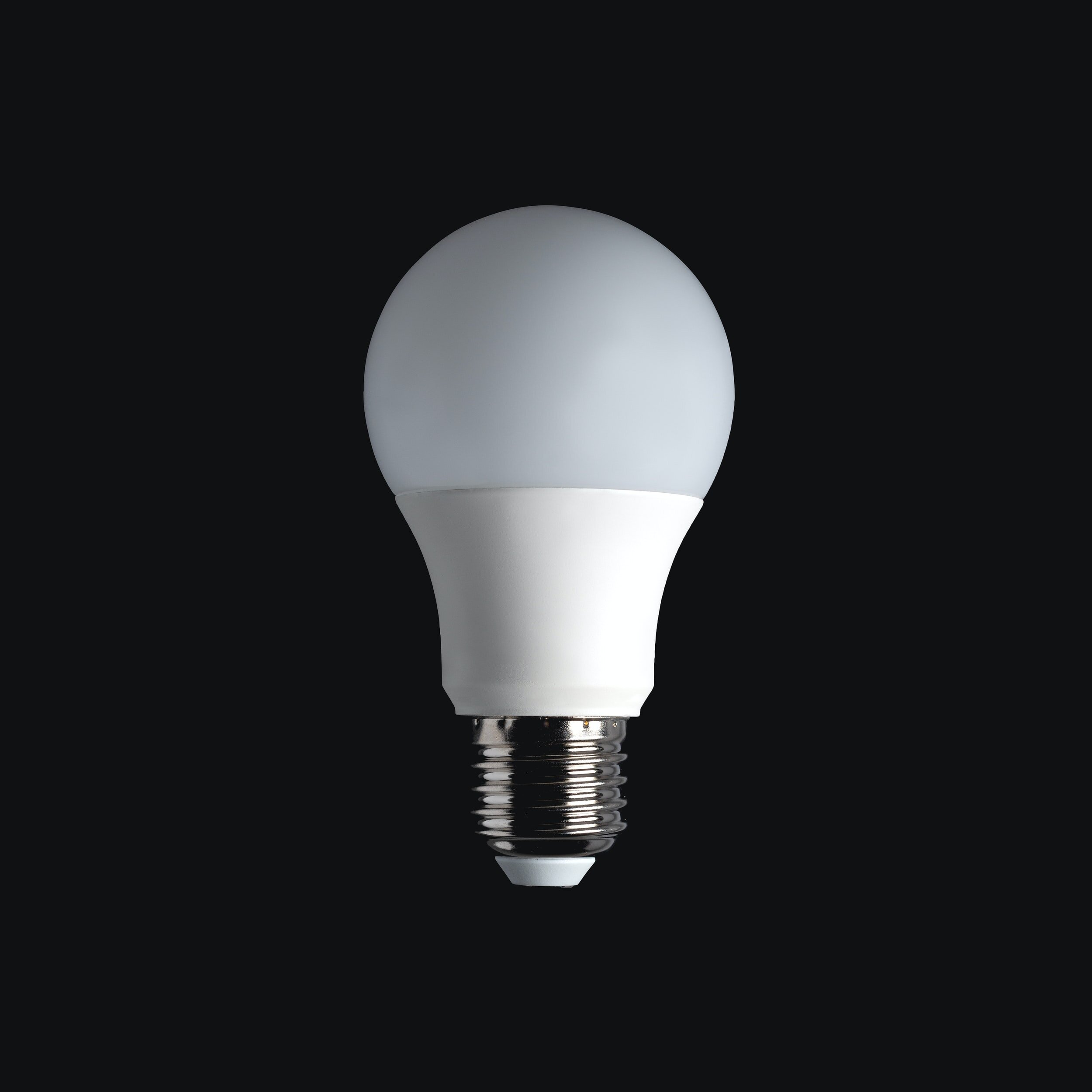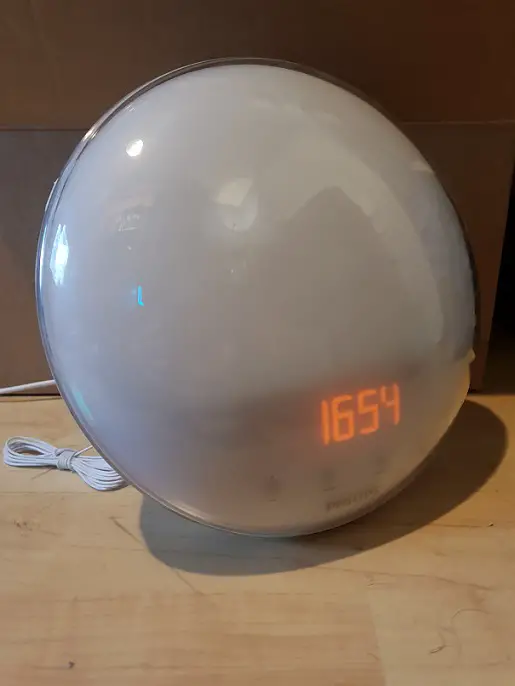Are LED Lights Warm Or Cool?
LEDs are one of the most efficient light sources currently created by mankind. LEDs are roughly 15x better at converting electrical energy into light than old-school incandescent bulbs.
That said, do they have the same light quality as incandescent bulbs do? Incandescent bulbs are known for their warm and comforting light whereas LEDs are commonly thought of as a very sterile and cold light. Here we will continue to discuss whether or not LEDs are warm or cool.
Contents
What Makes LEDs Warm Or Cool
LEDs are naturally a cool light source. The reason for this is that their most basic construction naturally creates a lot of light blue light. This is a result of LEDs generating a very insignificant amount of heat when producing light, which is what causes most common warm lights to appear warm.
While most LEDs are mostly cool, it is possible to modify their construction in such a way that it causes them to produce a warmer light.
This is done because of the popularity of warm lighting for home environments, which is a large market for light that LED manufacturers want to take advantage of. These LEDs are usually marked as 2700K or 3000K, which is the same colour temperature light that incandescent bulbs produce.
Defining Warm And Cool Light
Before discussing why LEDs are warm or cool we need to first define what warm and cool light is in the first place.
The “temperature” of LEDs is measured by their Correlated Colour Temperature (CCT). The value of this is given in Kelvin due to the Kelvin temperature scale that colour temperature is based on. Common colour temperature values are 2700K, 3000K and 4000K.
Warm and cool light as a whole is defined by what Kelvin temperature the light has. The distinctions between what counts as warm and cool light normally look like this:
- Extra Warm: 2000-2700K
- Warm White: 2700-3500K
- Cool White: 3500-6000K
- Daylight: 6000K
- Cold white: 6000K+
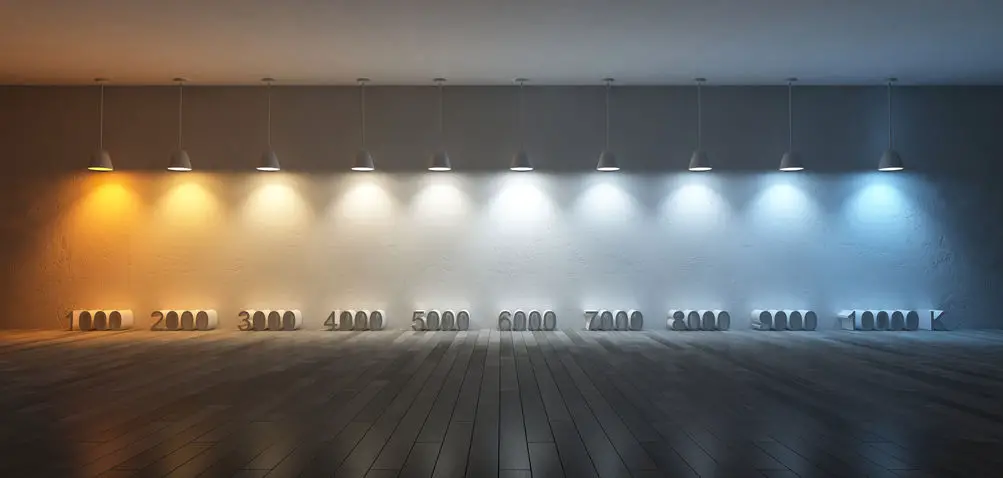
Using these distinctions you should easily be able to tell if an LED is warm or cool. If the colour temperature of the LED is anywhere between 2000-3500K it is warm and if it’s 3500-6000K it is considered cool.
Click here for a better understanding of Colour Temperature and the science behind it.
Unaltered LEDs
When talking about unaltered LED light we are referring to the light the raw LED function produces. LEDs are usually altered in some way in order to produce cooler/warmer light.
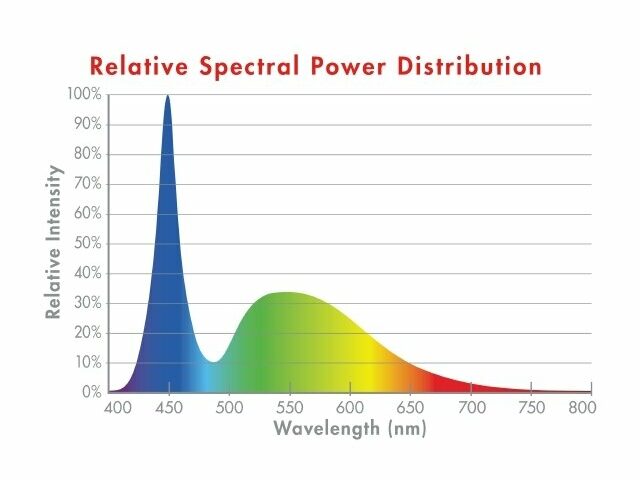
Unaltered LED lighting is very cool. The light it produces in the wavelengths that represent blue colours has a big spike and a slight spike in green that fades off before it reaches the red part of the spectrum.
It is for this reason that unaltered LEDs are very cool in nature because the wavelengths that correspond to orange and red are very underrepresented in the spectral distribution.
The reason for this is how LEDs produce light in the first place. LEDs produce light through a process known as “electroluminescence”. Electroluminescence can be defined as the process of a material producing photons (light particles) as the result of an electrical current passing through it.
This material is usually some sort of semiconductor. A semiconductor is simply a material that’s too conductive to be an insulator and too insulating to be a conductor. It falls somewhere in between those categories. The most commonly used semiconductors in LEDs are usually Gallium Arsenide (GaAs) or different variants of silicone.
Cool LEDs
While unaltered LEDs are very cool, they are not used as regular cool LEDs due to how unfiltered and unaltered LED light is either way too strong or pretty unstable colour-wise.
For this reason, we alter the LEDs slightly to make them more suitable. As for cool LEDs, they receive a slight layer of phosphor as a coat.
This phosphor’s colour is slightly yellow. This causes some of the blue light to lose some of its energy, which causes some of the wavelengths to become longer and more of the light ends up towards the green and red regions of the visible light spectrum.
Despite all of this, cool LEDs are simply more common than warm ones due to cooler colour temperatures for LEDs are more natural.
Warm LEDs
As for warm LEDs, they are actually created in a similar fashion as the cool ones. They also have a layer of phosphor added to them which has the same function as in cool LEDs.
The main difference between these lights has to do with the phosphor layer being a bit different. In cool LEDs, there is only a slight layer of phosphor to help its colour balance, whereas in warm LEDs the layer is a bit thicker.
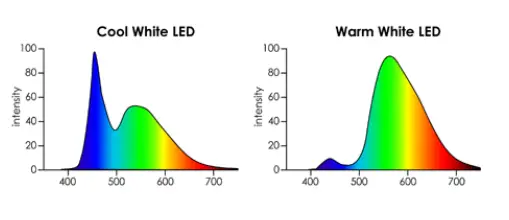
This makes it so that even more light loses its energy and has a longer wavelength. This makes it so that the light they produce contains a lot more green, yellow and red tones than it would have otherwise.
The consequence of this is that the colour temperature becomes warmer due to the more balanced warm/cold spectral emission.
Differences Between Warm And Cool LEDs
After having discussed what makes certain LEDs cool and warm we can look at what differences between them are outside of the colour temperature being different.
Visible Light Emission Difference Between Warm And Cool LEDs
The difference that causes the colour temperature to be different in the first place is that the spectral distribution is a lot different between the cool and warm LEDs, which we touched on a bit earlier.
The light from a cool white LED will generate a lot of blues and very little orange and red whereas warm LEDs will produce more orange/red tones but less blue, causing it to be a more balanced light.
While this has an effect on the colour temperature, it also has an effect on its colour rendering.
Colour rendering is the ability of light to reflect light from surfaces in a way that appears natural. This is measured from 0-100 on a scale called CRI, which is short for Colour Rendering Index.
The higher the CRI score is the better the LED is at giving off natural colour, with CRI100 being the best colour rendering rating.
The reason why warm and cool LEDs differentiate in this category is that the spectral diagram of warm LEDs is much more even than cool LEDs. Because the light warm LEDs give off is much more evenly balanced it scores a better CRI due to the scale valuing the evenness of the light emitted at specific colour temperatures.
Energy Efficiency Difference Between Warm And Cool LEDs
Another difference between cool and warm LEDs has to do with their energy efficiency. Cool LEDs are generally more energy efficient than warm LEDs.
The reason for cooler LEDs having a higher efficiency than warmer ones is that warmer LEDs require more/thicker phosphor coats than cool LEDs do. This extra layer of phosphor blocks out some of the light that would have otherwise been emitted.
This means that to achieve the same light output from cool and warm LED lights you need to feed the warm LED more energy to produce the same amount of light as a cool one would of the same colour temperature.
However, it is important to note that the energy efficiency difference between warm and cool LEDs is not that much. While the amount can differentiate a lot we are generally speaking of a range of around 10% difference. While this number is not that high it is not small enough to be fully statistically insignificant.
Visual Appearance Difference Between Warm And Cool LEDs
While the light quality between warm and cool LEDs is different there is also a noticeable difference in the way they look.
As mentioned above, cool LEDs have a small layer of phosphor on top of it whereas warm LEDs have a thicker layer of phosphor. This causes the colour of LED chips themselves to have slightly different colours.
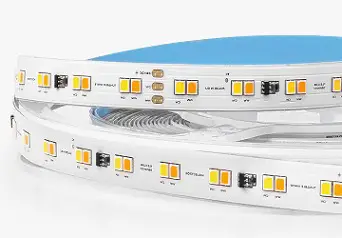
This is a tunable white LED strip. In very simple terms, a tunable white LED product is a light with the ability to shift its colour temperature.
This is accomplished by having both warm and cool LED chips in the same light, which makes it so it can gradually shift between warm and cool by simply altering the outputs of the warm and cool LEDs accordingly.
As can be seen in the image, the LED chips on this strip are grouped up in pairs, one cool and one warm LED chip. Looking at these pairs we see that one of the chips is more yellow in colour while the other one is more orange. This is how we can spot the difference between which one is which.
The cool LED chips are more yellow whereas the warm chips are orange in colour. This is due to the differences in the phosphor layers applied to them, which causes the warmer LED chips to appear more orange.
Physiological Differences Between Warm And Cool LED Light
While the physiological effects warm/cool light has on us are no different whether or not the light source is an LED or not it is still worth mentioning.
The reason why warm/cool light is different from each other to us physiologically is that our biological programming is linked with the colour temperature of light.
The reason for this has to do with the sun. Over the course of a day, the sun changes its colour temperature. During dusks and dawns it will have a colour temperature of around 2000-2500K while it peaks at around 6000K at its highest point during the day.

All of this ties into the Circadian rhythm, which essentially describes the “natural body time” for people. This is all linked together because the circadian rhythm is more or less based on the sun’s colour temperature due to the sun being the basis for all living life on earth.
Melatonin is our body’s sleep hormone. Melatonin growth is promoted in our body when exposed to warm light and is suppressed when subjected to cool light. This is the exact reason why cool lights are used in buildings such as schools and offices.
Summary
To summarize, these are the most important takeaways:
- LEDs are naturally a cool light, but a lot of them come in warm varieties too.
- Warm lights have a colour temperature of 2000-3500K and cool lights of 3500-6000K.
- Warm LEDs are able to exist thanks to the phosphor coating used on them.
- The light quality between warm and cool LEDs can be quite different.

